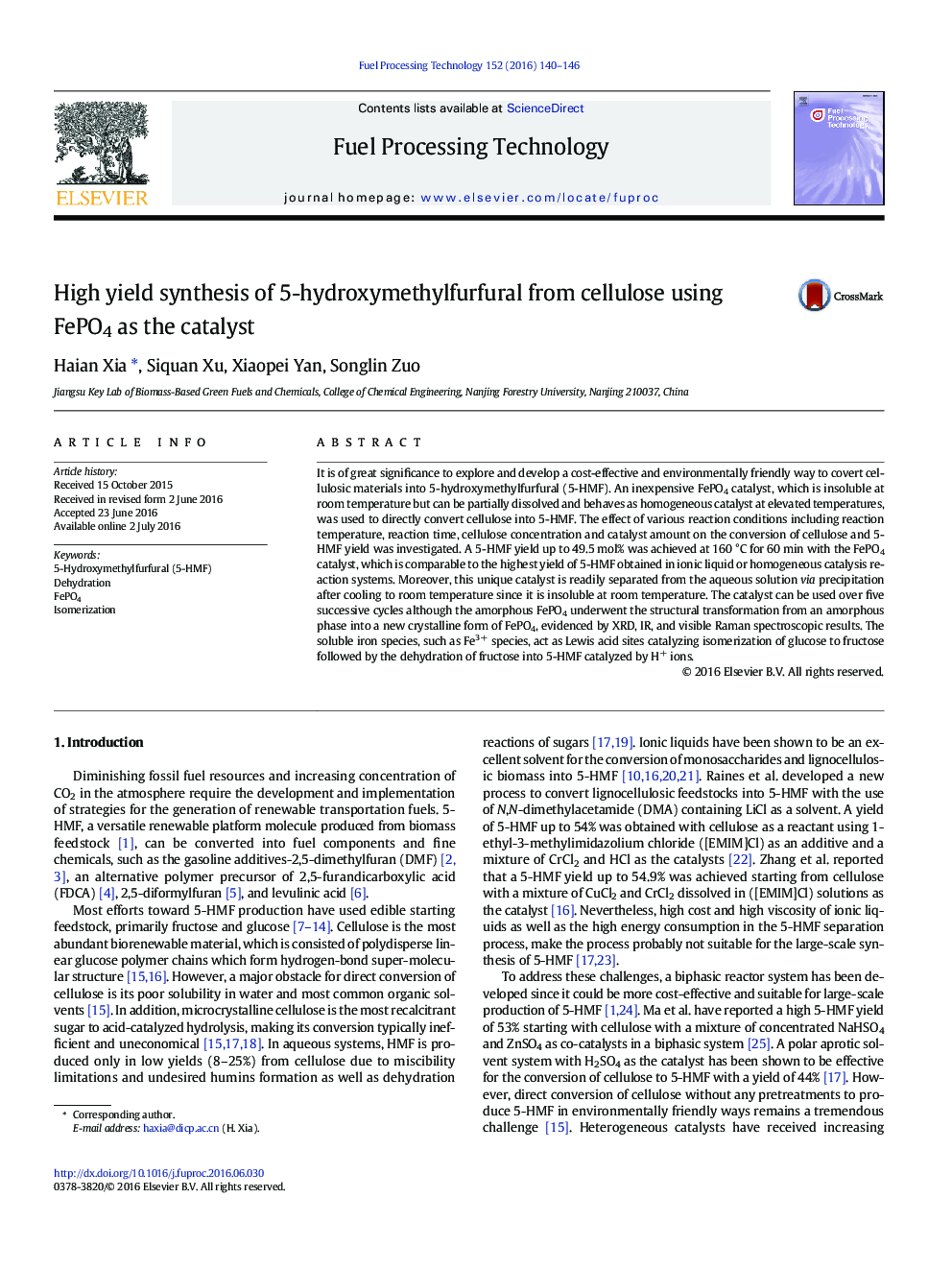| کد مقاله | کد نشریه | سال انتشار | مقاله انگلیسی | نسخه تمام متن |
|---|---|---|---|---|
| 209075 | 461653 | 2016 | 7 صفحه PDF | دانلود رایگان |

Highlight
• A cheap FePO4 catalyst was used to convert cellulose into 5-HMF.
• A 5-HMF yield up to 49.5 mol% starting with cellulose was achieved.
• The catalyst is readily recovered by precipitation after the reaction.
• Soluble iron species derived from the hydrolysis reaction of FePO4 are responsible for the conversion of cellulose.
It is of great significance to explore and develop a cost-effective and environmentally friendly way to covert cellulosic materials into 5-hydroxymethylfurfural (5-HMF). An inexpensive FePO4 catalyst, which is insoluble at room temperature but can be partially dissolved and behaves as homogeneous catalyst at elevated temperatures, was used to directly convert cellulose into 5-HMF. The effect of various reaction conditions including reaction temperature, reaction time, cellulose concentration and catalyst amount on the conversion of cellulose and 5-HMF yield was investigated. A 5-HMF yield up to 49.5 mol% was achieved at 160 °C for 60 min with the FePO4 catalyst, which is comparable to the highest yield of 5-HMF obtained in ionic liquid or homogeneous catalysis reaction systems. Moreover, this unique catalyst is readily separated from the aqueous solution via precipitation after cooling to room temperature since it is insoluble at room temperature. The catalyst can be used over five successive cycles although the amorphous FePO4 underwent the structural transformation from an amorphous phase into a new crystalline form of FePO4, evidenced by XRD, IR, and visible Raman spectroscopic results. The soluble iron species, such as Fe3 + species, act as Lewis acid sites catalyzing isomerization of glucose to fructose followed by the dehydration of fructose into 5-HMF catalyzed by H+ ions.
Journal: Fuel Processing Technology - Volume 152, November 2016, Pages 140–146